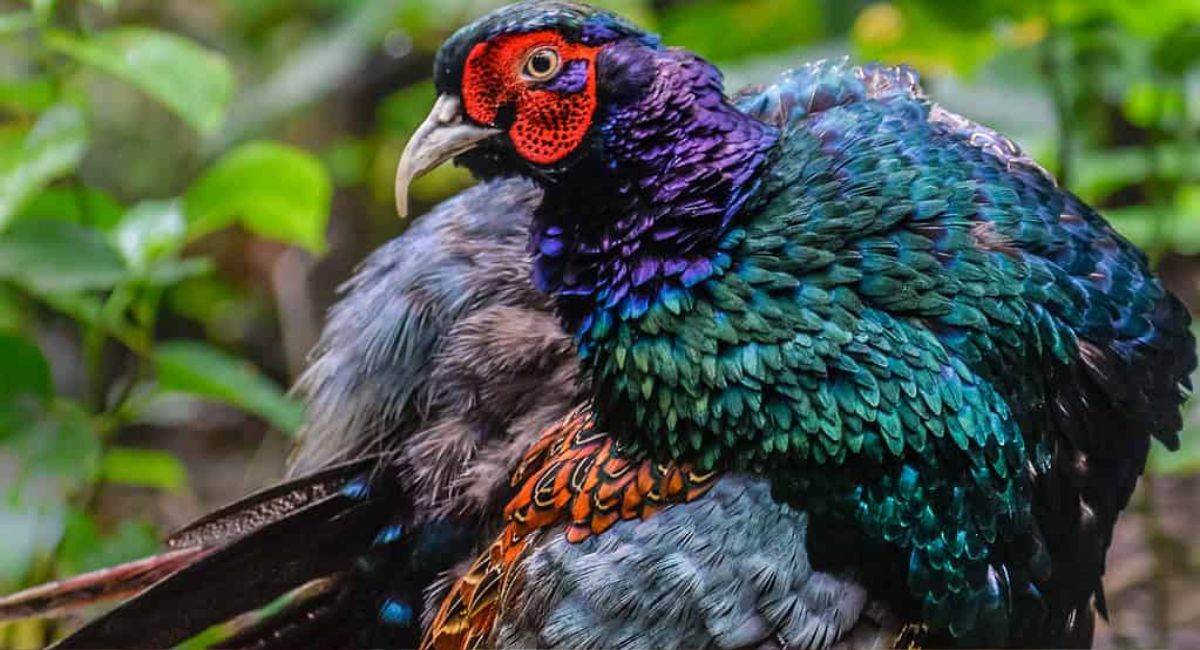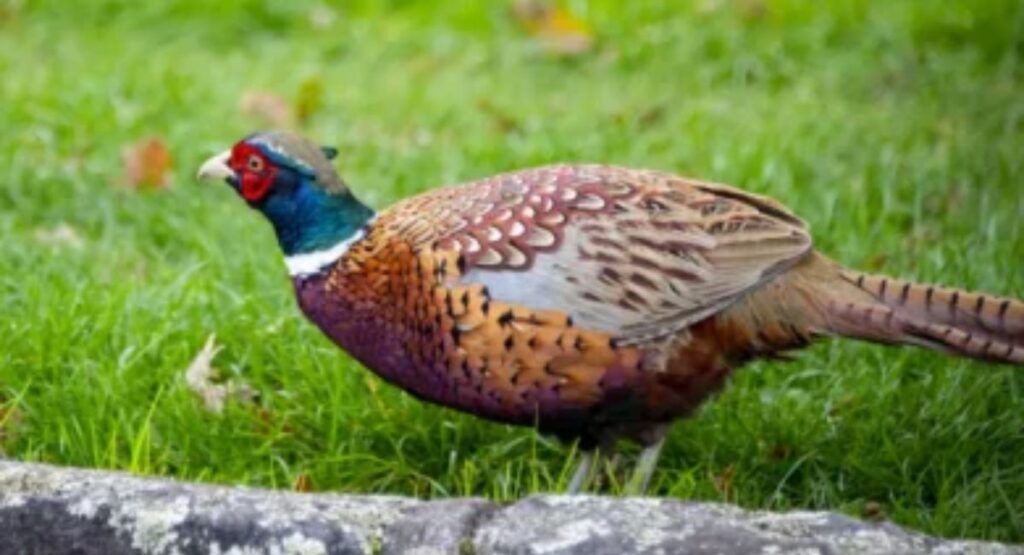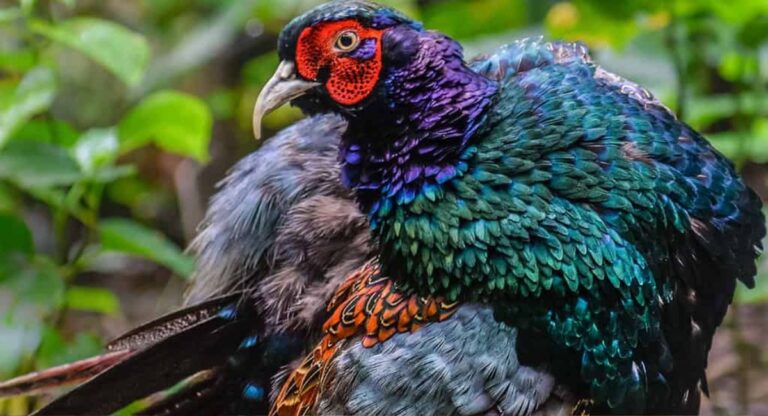
The green pheasant (Phasianus versicolor) is one of the most beautiful and culturally significant birds within Asia, particularly in Japan, where it is popularly hailed as the national bird. green pheasant With iridescent plumage, proud posture, and symbolic presence in folklore, art, and literature, the green pheasant is much more than just beautiful. It is a very deeply human history, against which all conservation efforts and ecological importance fade.
This article is intended to cover every aspect of the green pheasant: biology, habitat, cultural tradition and symbolism, conservation status, and even some culinary tradition. Hence, even if you are a birdwatcher or traveler interested in Japanese wildlife or much impressed with rarity, this is sure to be a good introduction to why green pheasant happens to be so special.
What is the Green Pheasant?
The green pheasant is a member of the pheasant family, Phasianidae. It is closely related to the common pheasant (Phasianus colchicus), which is widely distributed across Eurasia. Unlike the more familiar common pheasant, the green pheasant is endemic to Japan, making it a truly unique bird.
Physical Characteristics
- Male Green Pheasant: The males are especially eye-catching, with metallic green feathers on the breast and back, a bluish head, red facial wattles, and a long tail that can reach impressive lengths.
- Female Green Pheasant: The females are more subdued in color, mostly brown with black markings, which helps them blend into their surroundings when nesting.
- Size: Adult males average 75–90 cm in length, including the tail, while females are smaller at about 55–65 cm.
- Distinctive Features: The shimmering green plumage is what distinguishes the bird from its cousin, the common pheasant.
Scientific Classification
- Kingdom: Animalia
- Phylum: Chordata
- Class: Aves
- Order: Galliformes
- Family: Phasianidae
- Genus: Phasianus
- Species: Phasianus versicolor
Habitat and Distribution
The green pheasant is native to Japan and can be found on the country’s four main islands—Honshu, Shikoku, Kyushu, and sometimes Hokkaido (introduced populations). They prefer open fields, grasslands, and edges of forests. Unlike some species that avoid human presence, green pheasants are relatively adaptable and can often be seen in farmlands and near villages.
Preferred Habitats
- Grasslands: They thrive in grassy areas where seeds and insects are abundant.
- Agricultural Fields: Rice paddies and farmlands provide both food and shelter.
- Woodland Edges: Green pheasants use forest borders for protection from predators.
Seasonal Movements
Green pheasants are largely sedentary, meaning they do not migrate. They may, however, adjust their range slightly depending on food availability and breeding season.
Behavior and Diet
The green pheasant exhibits fascinating behaviors that reflect both its wild instincts and its adaptability to human-altered landscapes.
Feeding Habits
Green pheasants are omnivorous. Their diet changes with the seasons:
- Spring and Summer: Insects, worms, and other small invertebrates form a large part of their diet, providing necessary protein for breeding and raising chicks.
- Autumn and Winter: Seeds, grains, and berries dominate their diet. They are often seen foraging in fields after harvest.
Breeding and Courtship
- Mating Season: The breeding season begins in spring, with males performing elaborate courtship displays.
- Displays: Males fan their tails, puff up their feathers, and call loudly to attract females.
- Nesting: Females build nests on the ground, usually concealed in tall grasses or shrubs.
- Chicks: The eggs hatch after about 23–25 days, and the chicks are precocial, meaning they are relatively mature and mobile soon after hatching.
Social Structure
Green pheasants are generally solitary or found in small groups. During the breeding season, males establish territories and defend them aggressively from rivals.
The Green Pheasant in Japanese Culture
One cannot discuss the green pheasant without acknowledging its deep cultural significance in Japan.
National Bird of Japan
The green pheasant was officially designated as the national bird of Japan in 1947. Its selection was based on its unique presence in the country, symbolic meaning, and familiarity to the Japanese people.
Folklore and Mythology
- Messenger of the Gods: In Japanese mythology, the green pheasant is sometimes considered a messenger of the sun goddess Amaterasu.
- Symbol of Protection: The pheasant is believed to protect against earthquakes and natural disasters, leading to its appearance in various traditional stories.
- Representation in Literature: Classical Japanese poetry, particularly in the Manyoshu, references the pheasant as a symbol of love, longing, and protection.
Art and Symbolism
Green pheasants frequently appear in traditional Japanese paintings, textiles, and crafts. Their elegant posture and shimmering feathers have inspired countless artists throughout history.
Conservation Status of the Green Pheasant

The green pheasant is currently listed as Least Concern on the IUCN Red List. However, certain factors make conservation awareness important.
- Habitat Loss: Urbanization and agricultural expansion have reduced their natural habitats.
- Hunting Pressure: Although hunting is regulated, green pheasants are still pursued for sport and sometimes for food.
- Predation: Introduced predators such as foxes, raccoons, and domestic cats pose threats to nests and chicks.
Despite these challenges, the adaptability of the green pheasant has allowed it to remain stable in numbers compared to other bird species. Conservation efforts in Japan include habitat preservation, regulated hunting, and public awareness campaigns.
Green Pheasant vs. Common Pheasant
Because the green pheasant is closely related to the common pheasant, people often confuse the two. Let’s compare them:
| Feature | Green Pheasant (Phasianus versicolor) | Common Pheasant (Phasianus colchicus) |
|---|---|---|
| Range | Endemic to Japan | Native to Eurasia, introduced worldwide |
| Plumage | Males have metallic green body and bluish head | Males have golden, copper, and red hues |
| Status | National bird of Japan | Widely distributed, often hunted game bird |
| Symbolism | Deeply tied to Japanese culture | Primarily valued for hunting and cuisine |
Green Pheasant in Cuisine
Historically, the green pheasant has been part of Japanese cuisine. Known as kiji in Japanese, its meat is considered a delicacy.
Traditional Uses
- Soups and Stews: Pheasant meat is often simmered slowly to create rich broths.
- Grilled Dishes: Skewered and grilled pheasant is another traditional preparation.
- Symbolic Feasts: Pheasant dishes were sometimes served at ceremonial banquets.
Today, the consumption of green pheasant is much less common due to cultural shifts and conservation awareness, but it remains an important part of culinary heritage.
Ecological Role of the Green Pheasant
Beyond culture and cuisine, the green pheasant plays an important ecological role:
- Seed Dispersal – By feeding on fruits and seeds, pheasants help spread plant species.
- Pest Control – Their insect-based diet during summer reduces populations of harmful insects.
- Prey Species – They form part of the food chain, providing sustenance for predators such as hawks and foxes.
Their adaptability to agricultural environments also shows how wildlife and human activity can coexist in balance.
Birdwatching and the Green Pheasant
For birdwatchers visiting Japan, spotting a green pheasant is a memorable experience.
Best Places to See Them
- Countryside of Honshu: Especially in rural farmlands.
- Kyushu and Shikoku: Agricultural zones and forest edges.
- Nature Reserves: Some protected areas maintain healthy pheasant populations.
Tips for Observing
- Go early in the morning, when males are most active and vocal.
- Look near rice paddies and farmlands.
- Use binoculars and maintain distance to avoid disturbing them.
The Symbolic Importance of the Green Pheasant Today
Even in modern Japan, the green pheasant continues to carry symbolic weight. It is featured in:
- Stamps and Official Seals: Representing national pride.
- Local Festivals: Celebrated in regional traditions.
- Environmental Education: Used as a symbol of biodiversity and conservation.
Global Interest in the Green Pheasant
While the green pheasant is endemic to Japan, it garners international interest among ornithologists, conservationists, and cultural historians. Its close relationship to the common pheasant also makes it significant in evolutionary and genetic studies.
Conclusion
The green pheasant is much more than a bird—it is a living emblem of Japan’s natural beauty, cultural heritage, and ecological diversity. From its shimmering feathers to its role in mythology and cuisine, the green pheasant continues to captivate both locals and visitors alike.



